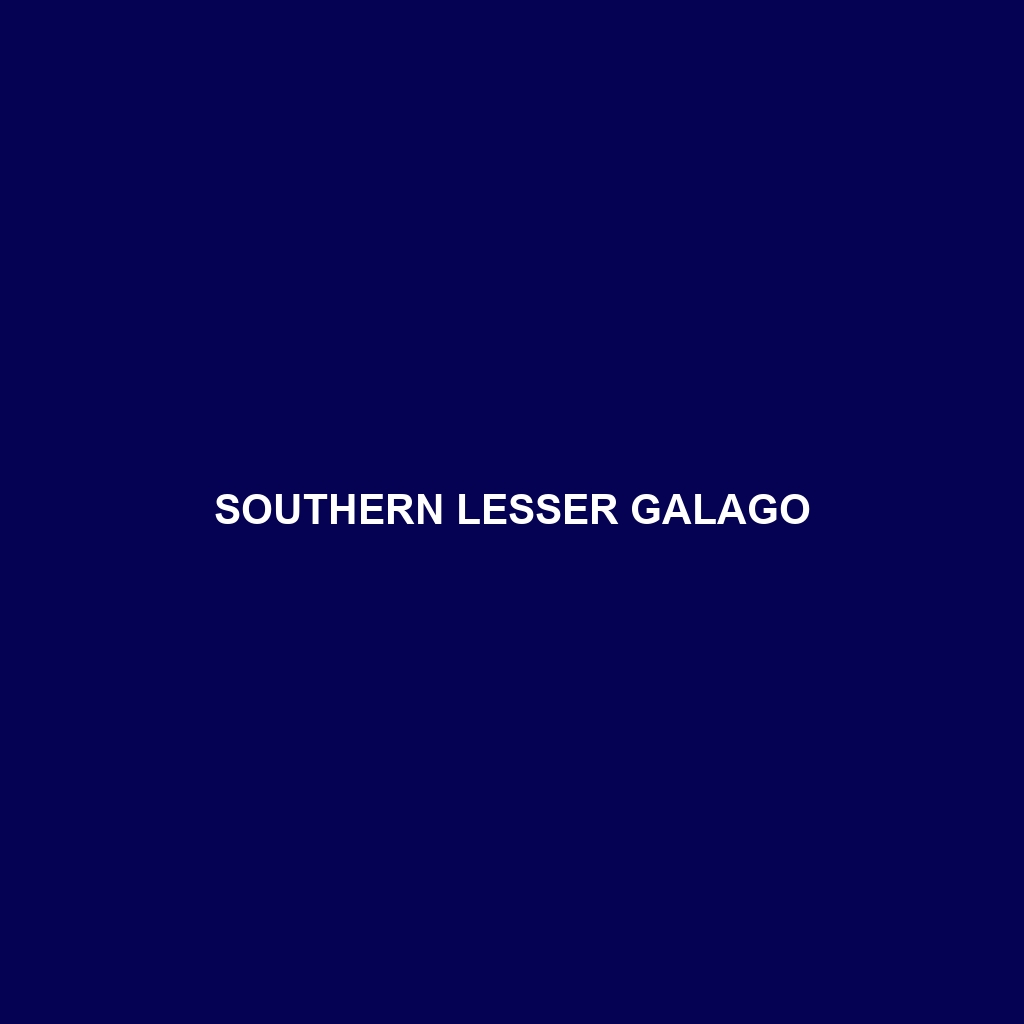Southern Lesser Galago (Common Name)
Scientific Name: Galago moholi
Habitat
The Southern Lesser Galago is primarily found in the southeastern regions of Africa, particularly in countries such as South Africa, Zimbabwe, and Botswana. This nocturnal primate inhabits a variety of environments, including savannas, grasslands, and woodlands. Its preference for dense foliage provides ample cover and food sources, making these habitats crucial for its survival.
Physical Characteristics
The Southern Lesser Galago is a small primate, averaging between 25 to 30 centimeters in length, excluding a long tail that can reach up to 35 centimeters. Its fur is typically a soft gray-brown with a white underbelly, and it has large, dark eyes that are adapted for night vision. Notable features include its round face, pointed ears, and distinctive long fingers and toes that aid in grasping and climbing.
Behavior
Southern Lesser Galagos are highly social animals, living in small groups that typically include a dominant male, several females, and their young. They are known for their remarkable agility and acrobatic skills, often jumping between trees in search of food. These primates are primarily nocturnal, exhibiting peak activity during the night, which influences their hunting and social interactions.
Diet
The diet of the Southern Lesser Galago primarily consists of insects, fruits, and tree gums. They are known for their diverse feeding habits, often foraging for crickets, beetles, and other insects during the night. Their ability to consume a wide range of food sources plays a significant role in their survival, especially in changing environments.
Reproduction
Southern Lesser Galagos typically breed during the wet season when food is abundant. The gestation period lasts approximately 120 days, and females usually give birth to one or two offspring at a time. After the young are born, they cling to their mother’s fur for warmth and safety, and she will introduce them to the social group as they grow. Parental care is provided predominantly by the mothers, though other group members often assist.
Conservation Status
The Southern Lesser Galago is currently classified as Least Concern on the IUCN Red List; however, it faces threats from habitat destruction and fragmentation due to agriculture and urbanization. Conservation efforts are essential to ensure the survival of this species in its natural habitats.
Interesting Facts
One of the most fascinating aspects of the Southern Lesser Galago is its unique vocalizations. They produce a variety of sounds to communicate within their group, which includes alarm calls to warn of predators. Additionally, their impressive leaping ability allows them to jump distances up to 5 meters, making them one of the most agile primates in their habitat.
Role in Ecosystem
The Southern Lesser Galago plays a vital role in its ecosystem as both predator and prey. By feeding on a range of insects, they help regulate insect populations, contributing to the balance of their habitat. Furthermore, as a prey species, they are an important food source for larger predators, highlighting their significance in the food chain.
